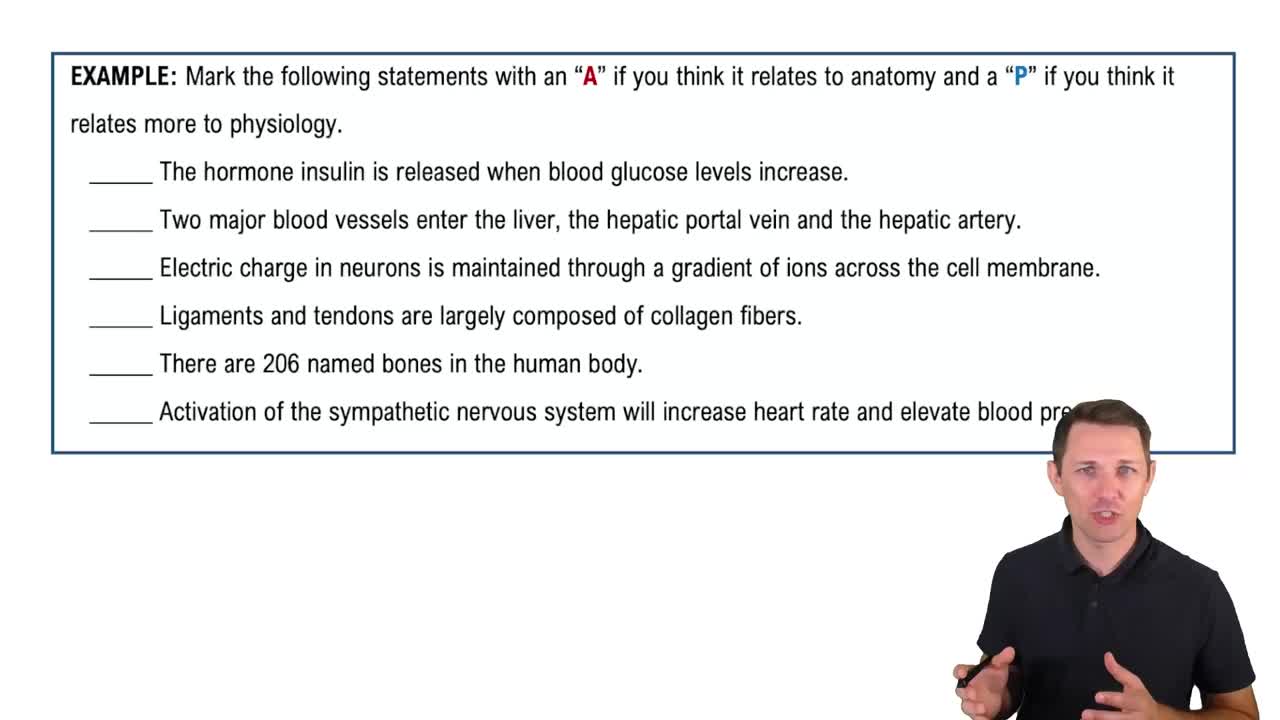Here are the essential concepts you must grasp in order to answer the question correctly.
Principle of Complementarity
The principle of complementarity states that the function of a biological structure is directly related to its form. This means that the anatomy of an organism, including its shape and arrangement of parts, is designed to support its physiological processes. For example, the structure of the lungs, with their large surface area and thin walls, facilitates efficient gas exchange, illustrating how anatomy and physiology are interdependent.
Recommended video:
Anatomy
Anatomy is the branch of biology that studies the structure of organisms, including their systems, organs, and tissues. It can be divided into gross anatomy, which examines structures visible to the naked eye, and microscopic anatomy, which focuses on cells and tissues. Understanding anatomy is crucial for comprehending how different parts of the body work together to support life functions.
Recommended video:
Physiology
Physiology is the study of the functions and processes of living organisms and their parts. It explores how anatomical structures operate and interact to maintain homeostasis and support life. For instance, understanding how the heart pumps blood requires knowledge of both its anatomical structure and the physiological mechanisms that regulate its function, highlighting the connection between anatomy and physiology.
Recommended video:
What is Anatomy & Physiology? Example 1




